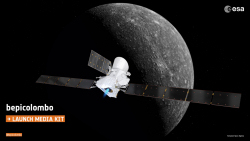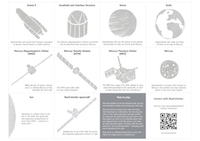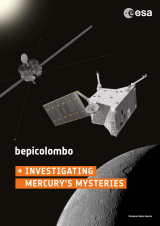ESA Science & Technology - Publication Archive
Publication archive
Publication archive
 |
Download this interactive media kit to learn more about the launch of BepiColombo on 20 October 2018, the spacecraft's seven year journey to Mercury, and the science goals of the mission.
Contents:
Introduction
Event Programme
Key messages
BepiColombo science themes
From Messenger to BepiColombo
Mercury Planetary Orbiter's science instruments
Mercury Magnetospheric Orbiter's science instruments
Launch and separation timeline
Mercury Transfer Module cameras
Journey to Mercury
Venus flyby science operations
Arrival at Mercury
Operating in extreme environments
Quick look Mercury facts
Principal investigators
Selected images
Selected videos
Media services
Update 10 October 2018: Updated figure on pages 8 and 12.
Update 18 October 2018: Inserted new page 11 (MTM cameras), updated figure on pages 8, 9, 13 and 16, changed "MMO-MAG" to "MMO-MGF" throughout, added link to cartoon video, changed email address for University of Leicester contact (page 22).
Update 08 April 2020: A new version was released containing an updated version of the journey graphic on p12.
To download the pdf file (14 MB) click on the image or on the link to publication below.
 |
Test your memory and get to know the BepiColombo mission and its journey to Mercury.
Download the PDF and print it on your home computer. If you wish to print double-sided you can use the fourth page of the PDF for the back of the cards. Carefully cut out the individual cards.
Use the extra template to create a box to keep your cards safe.
How to play:
Play the game by mixing up the cards and laying them face down on a flat surface. Turn over any two cards. If they match, keep them and have another go, otherwise turn them both back over and it is the next player’s go. (Hint: try to remember which cards your opponent turns over!) The game is over when all the cards have been paired. The player with the most pairs wins. You can also play alone – keep going until you’ve matched all the cards.
 |
Contents
- Europe to Mercury
- Mercury rising: coping with high temperatures
- Building and testing BepiColombo
- Introducing the fleet
- Meeting Mercury
- From Messenger to BepiColombo
- An international endeavour
